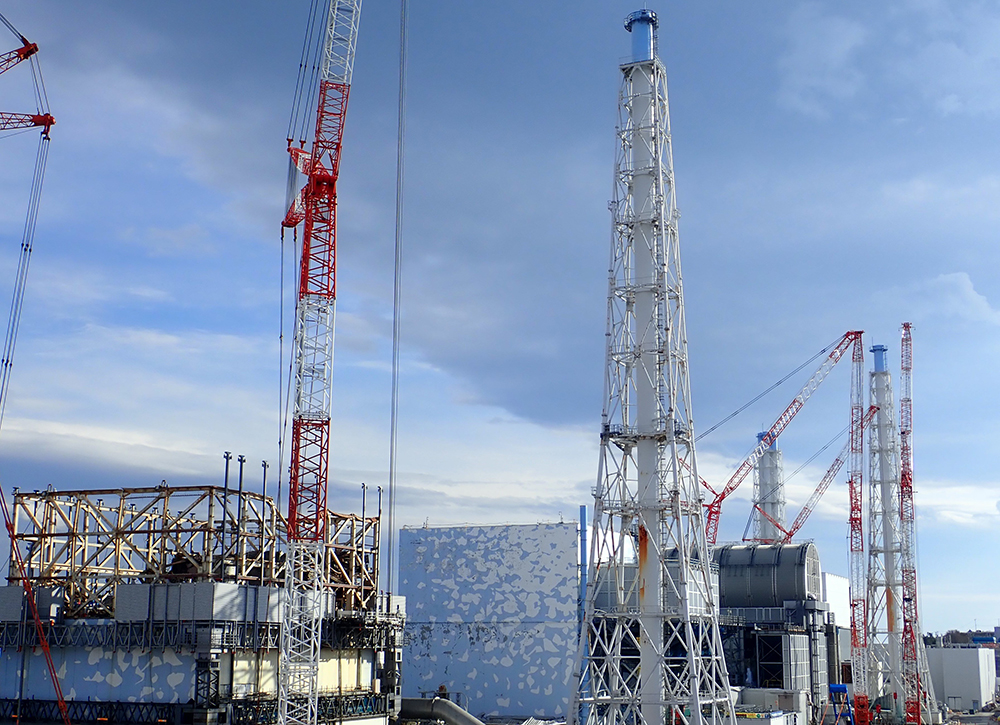Fukushima Daiichi Nuclear Power Station The challenge of retrieving “fuel debris” Article No.1: What is fuel debris?
(in provisional translation)
(English ver.) 2020-04-06

Provided by Tokyo Electric Power Company Holdings, Inc.
Since the accident at TEPCO’s Fukushima Daiichi Nuclear Power Station (Fukushima Daiichi NPS) in March, 2011, efforts have been made toward its decommissioning. One of the challenges facing such efforts is the retrieval of the substance known as “fuel debris”. We will present a series of articles to firstly provide a basic understanding of “fuel debris” and then update the efforts being made as of the spring of 2020 toward the retrieval of fuel debris.
What is “fuel debris”? Why is it there?
The decommissioning of Fukushima Daiichi NPS is considered to be a difficult task that is unprecedented elsewhere in the world. One of the factors causing difficulty is the existence of “fuel debris”. During the accident at the NPS in March, 2011, nuclear fuel melted down and mixed with various pieces from structures which solidified inside the reactor. This is referred to as “fuel debris”.
Let us review what happened in Reactor Units 1 to 4 respectively at the time of the accident and how measures have been taken since then.
Hydrogen explosions occurred at Units 1 and 3. Hydrogen leaked from Unit 3 flowed into Unit 4, where it also exploded. The buildings of Units 1, 3 and 4 were severely damaged by those explosions. Unit 2, in the meantime, was saved from explosions. It is thought that the “blow-out panel for depressurization” installed in the building of Unit 2 went off from the external shocks of explosions that occurred at Unit 1, which released hydrogen from Unit 2 into the atmosphere.
It is in Units 1, 2 and 3 that fuel debris exists. Unit 4 was not operating under scheduled maintenance when the earthquake occurred. Therefore, it was saved from fuel meltdown because all the fuel had been removed from the reactor and transferred into the spent fuel pool.
Let us now look at the current status of fuel debris.
Fuel debris in Units 1, 2 and 3 is being cooled continuously by water. As a result, the heat of fuel debris has been reduced substantially since the accident happened. It is currently in a stable condition with the temperature inside the units ranging between 15 and 35 degrees Celsius. Should the cooling by water stop for any reason, it would take about two weeks for the temperature to reach the maximum permissible threshold (80 degrees Celsius). Therefore, there would be sufficient time for proper countermeasures to be taken.
Rare gas quantities, which would increase by “recriticality” (reoccurrence of criticality, a chain reaction of uranium fission), are monitored 24 hours a day. As rare gas quantities are currently stable, it is thought that recriticality has not occurred. Should recriticality occur, the emergency system would be activated to suppress nuclear fission by injecting a boric acid solution into the reactor.
The “Mid-and Long-Term Roadmap toward Decommissioning” and the process of fuel debris retrieval
TEPCO should take primary responsibilities for decommissioning of the NPS and contaminated water management including fuel debris retrieval. That being said, as it is a technically difficult task that is unprecedented elsewhere in the world, the Government of Japan is required to come to the fore so that steps in line with the roadmap can be taken safely and steadily.
The government compiled the “Mid-and Long-Term Roadmap” ver.1 in December, 2011 with the completion of decommissioning targeted 30 to 40 years away. Steps toward decommissioning are being properly taken with priority given to safety for minimizing risks.
The roadmap has been revised several times according to the progress of decommissioning and contaminated water management with the actual situation of the site taken into consideration from time to time. Five revisions have been made by February, 2020. The major steps in the latest version of the roadmap are outlined below. Crucial milestones of the mid-and long-term roadmap are shown below.
Milestones (main target processes) in the Mid-and Long-Term Roadmap

The “Mid-and Long-Term Roadmap” 5th revision compiled in December, 2019 stipulates the following steps for fuel debris retrieval:
1) To determine the method of retrieving fuel debris from the first unit to be nominated.
2) To start retrieving from the first unit (Unit 2) on a trial basis by the end of 2021.
3) To gradually increase the scale of retrieval thereafter.
A robot arm (as shown in the picture below) is currently in development as a means of retrieval. Details will be explained in another article of this series.
Unit 2 has been nominated as the first unit for the following reasons:
1) To achieve safety, security and speed.
2) To avoid adverse effects on spent fuel removal from the pool.
3) To optimize the overall decommissioning operations.
Various technological developments and studies are currently in progress toward the commencement of fuel debris retrieval by the end of 2021.
Division in charge
About the article
Nuclear Accident Response Office, Electricity and Gas Industry Department
About Special Contents
Research and Public Relations Office, Policy Planning and Coordination Division, Commissionerʼs Secretariat


